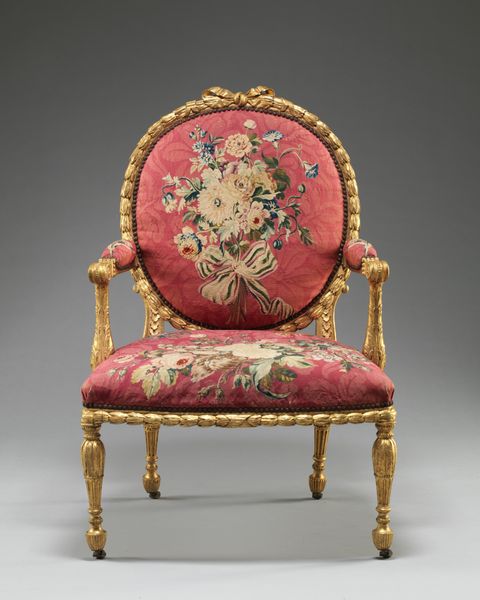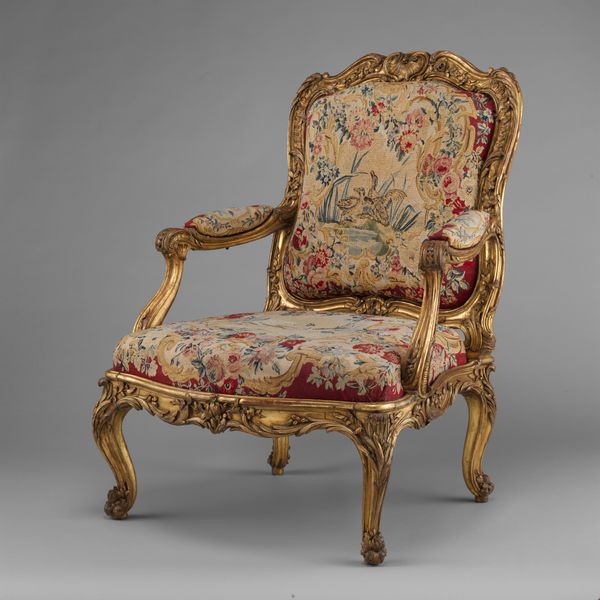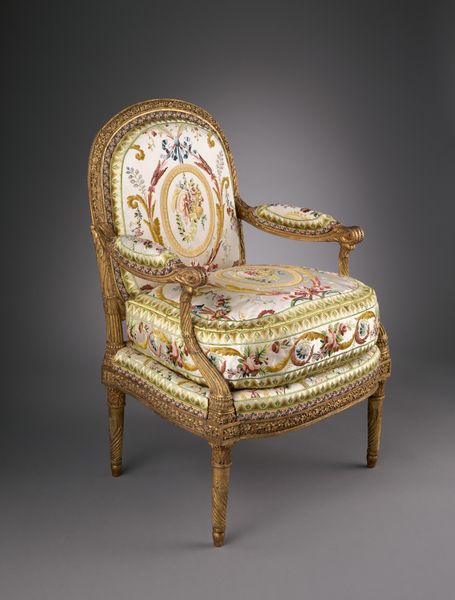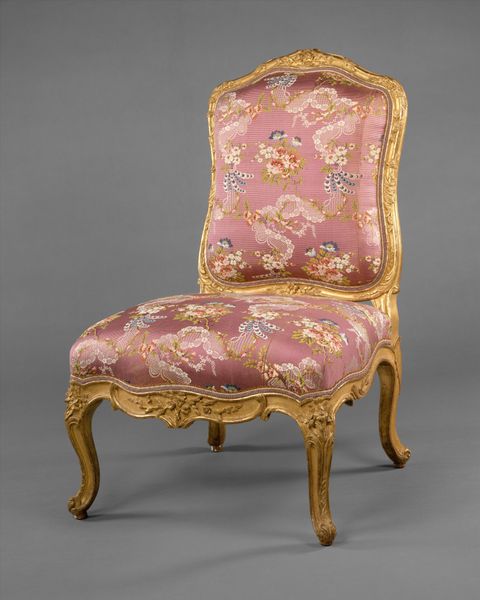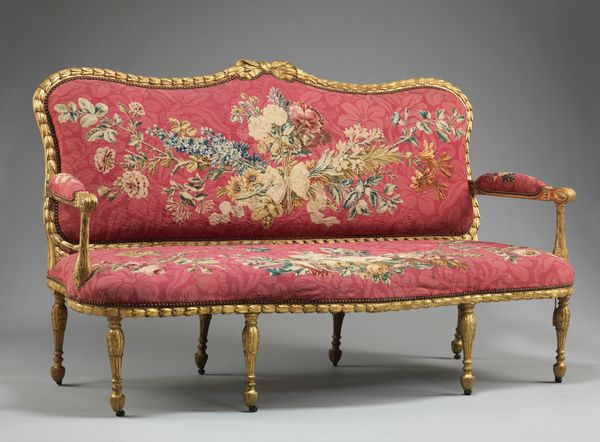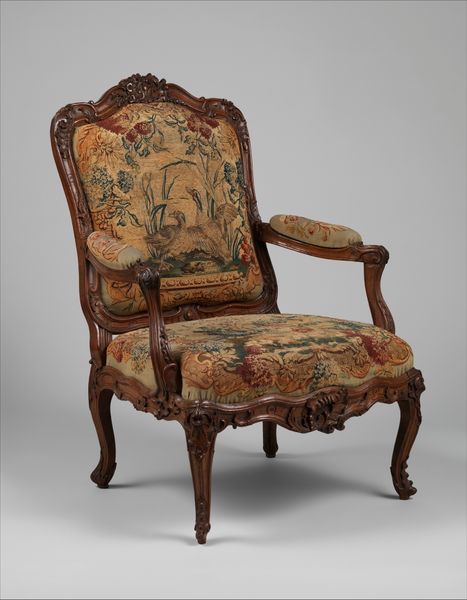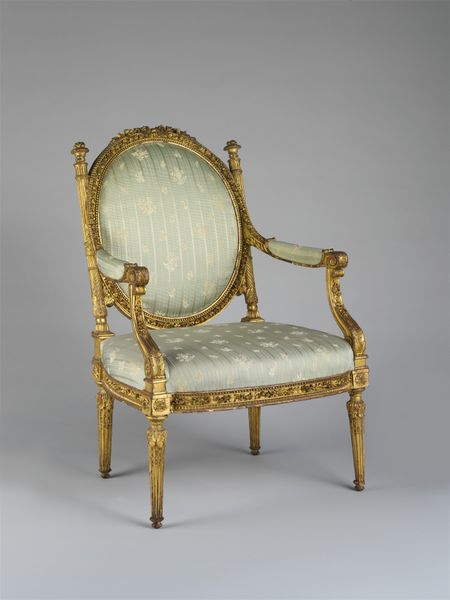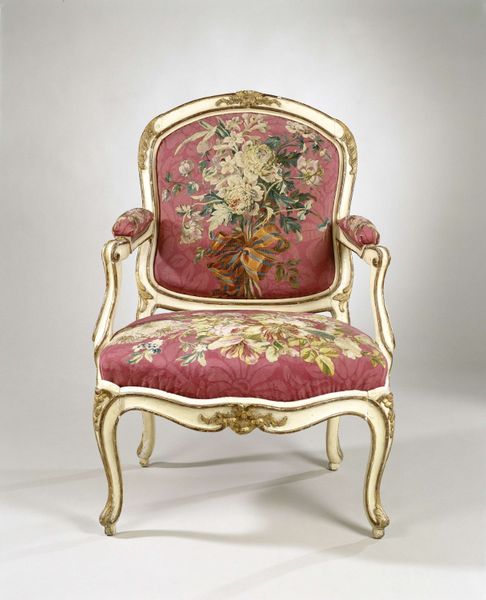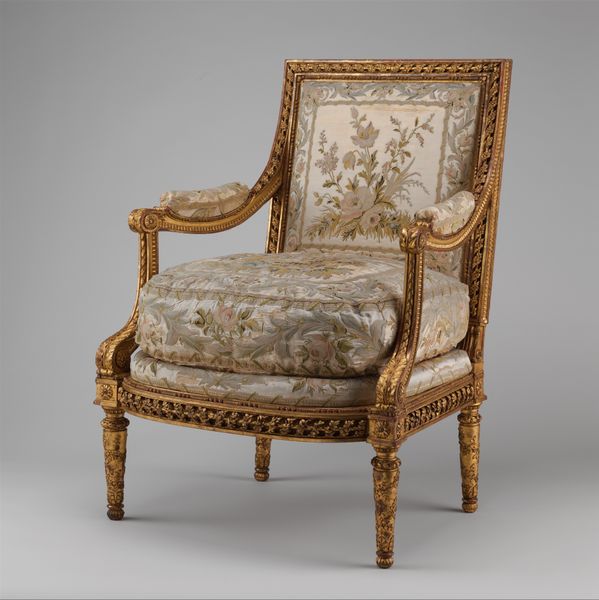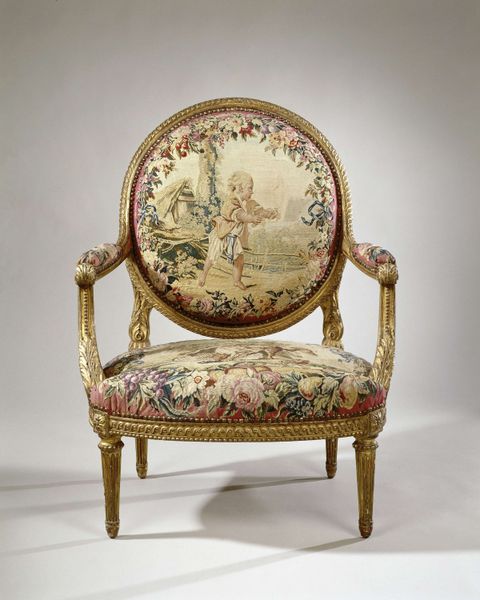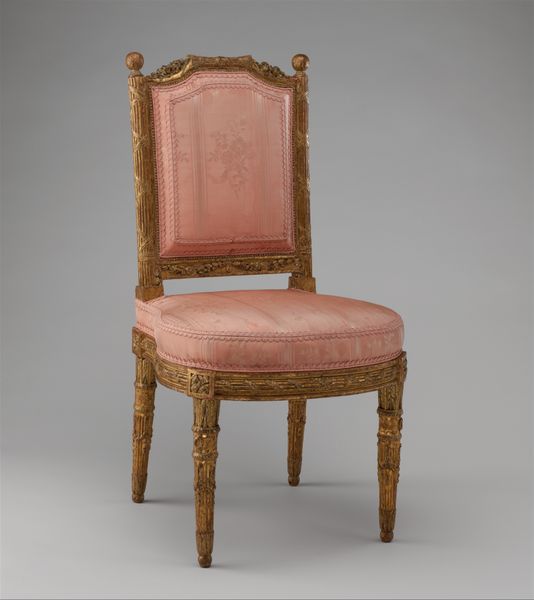
Dimensions: 41 1/2 × 28 1/2 × 27 in. (105.4 × 72.4 × 68.6 cm)
Copyright: Public Domain
Curator: This lavish piece, one of six armchairs, was crafted by John Mayhew between 1769 and 1771. Currently residing here at the Metropolitan Museum of Art, the chair masterfully blends wood, textile, and sculpture. Editor: My initial impression is one of delicate opulence. The gilded frame contrasted against the floral textile is striking; it’s very romantic, yet there's something unsettling about the rigid formality. Curator: Indeed, the Rococo revival, particularly in furniture, often evokes those contrasting feelings. Mayhew's chairs would have been positioned in a formal drawing-room. What social narratives might they have facilitated? Consider the women, in particular, seated here, participating in conversations. Editor: Absolutely. It conjures images of the Enlightenment salons, women confined to prescribed roles within these lavish settings. This "decorative art" carries heavy political baggage – speaking volumes about the power structures of the era and the female body placed strategically within them. Did the embroidery itself carry meaning, signifying specific aspirations or affiliations? Curator: The embroidery, undeniably. Floral patterns were extremely popular but can offer different perspectives when viewed through, say, gender or class. Were the individuals purchasing and using these chairs engaging in dialogues or perpetuating inequalities, knowingly or not? The decorative arts, here, become potent signifiers of class. Editor: Right. This is so much more than mere aesthetic appeal. It's a powerful symbol of aristocratic life and raises fundamental questions about social positioning and the performance of identity during that time. It’s no wonder that the decorative arts fell out of favor during later periods; there are simply too many social problems bundled inside such designs. Curator: A stark contrast to our contemporary concerns about ethical design and transparency! This single object manages to spark reflections about art as complicit with historical power dynamics and simultaneously a canvas onto which new meanings and perspectives are now projected. Thank you. Editor: An insightful reflection indeed, emphasizing that this seemingly docile piece speaks volumes about wealth, labor, and representation and makes me reflect on the political urgency we carry today.
Comments
No comments
Be the first to comment and join the conversation on the ultimate creative platform.
